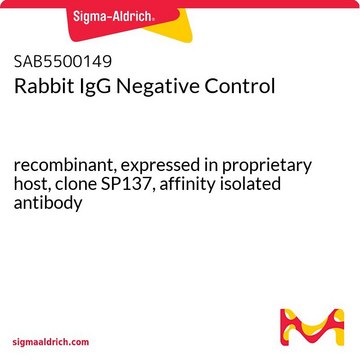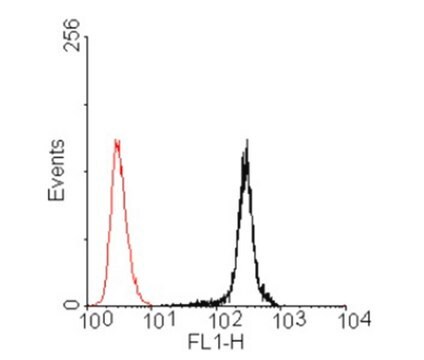MABC1128
Anti-FAM83B Antibody, clone 7D11
clone 7D11, from mouse
Synonim(y):
Protein FAM83B, Family with Sequence Similarity 83, member B
About This Item
Polecane produkty
pochodzenie biologiczne
mouse
forma przeciwciała
purified immunoglobulin
rodzaj przeciwciała
primary antibodies
klon
7D11, monoclonal
reaktywność gatunkowa
human
opakowanie
antibody small pack of 25 μg
metody
immunocytochemistry: suitable
immunoprecipitation (IP): suitable
western blot: suitable
izotyp
IgG2bκ
numer dostępu NCBI
numer dostępu UniProt
docelowa modyfikacja potranslacyjna
unmodified
informacje o genach
human ... FAM83B(222584)
Opis ogólny
Specyficzność
Immunogen
Zastosowanie
Signaling
Immunocytochemistry Analysis: A representative lot detected FAM83B in Immunocytochemistry applications (Cipriano, R., et. al. (2012). J Clin Incest. 122(9):3197-210).
Immunoprecipitation Analysis: A representative lot detected FAM83B in Immunoprecipitation applications (Cipriano, R., et. al. (2014). Oncogene. 33(25):3298-306).
Jakość
Western Blotting Analysis: 1 µg/mL of this antibody detected FAM83B in HEK293T cells transfected with SN3-hFAM83B-HA.
Opis wartości docelowych
Postać fizyczna
Przechowywanie i stabilność
Inne uwagi
Oświadczenie o zrzeczeniu się odpowiedzialności
Nie możesz znaleźć właściwego produktu?
Wypróbuj nasz Narzędzie selektora produktów.
Certyfikaty analizy (CoA)
Poszukaj Certyfikaty analizy (CoA), wpisując numer partii/serii produktów. Numery serii i partii można znaleźć na etykiecie produktu po słowach „seria” lub „partia”.
Masz już ten produkt?
Dokumenty związane z niedawno zakupionymi produktami zostały zamieszczone w Bibliotece dokumentów.
Nasz zespół naukowców ma doświadczenie we wszystkich obszarach badań, w tym w naukach przyrodniczych, materiałoznawstwie, syntezie chemicznej, chromatografii, analityce i wielu innych dziedzinach.
Skontaktuj się z zespołem ds. pomocy technicznej








